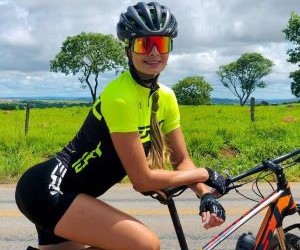Learn how to choose between clipless and flat pedals by comparing efficiency, control, comfort, and riding style to find the right setup for your needs.
HOW DO I HANDLE LIMITED DATA FOR WOMEN’S CX/MTB WHEN MARKETS APPEAR?
Women’s cyclocross (CX) and mountain bike (MTB) events are gaining traction in the betting world, but sharp punters often hit a wall: limited or inconsistent data. When markets appear for these niche events, especially last-minute, making informed decisions can feel impossible. This guide gives you a playbook for handling sparse data, leveraging proxies, and building confidence in your bets—even in opaque environments.

Start with structured baseline proxies
When direct data is missing, proxies become essential. These are indirect indicators—like performance in similar race formats or conditions—that can help construct a betting model. Think of them as a bridge when full stats aren’t available.
Use same-series male data as structural guidance
While men’s fields are different, patterns like course difficulty, race time spread, and team tactics often align. Use male data to understand likely race dynamics, which helps frame expected time gaps or attack points for female riders.
Extract from UCI points and recent finishes
Even limited, UCI point tables can anchor models. Combine that with any podiums, DNFs, or recent results—even from national races—to rank riders by form. Track weather-adjusted finish times if possible.
UCI ranking trends over the past 6–12 months
Results from similar course profiles (sand, mud, alpine)
Team tactics based on historical rider roles
Men’s race pacing and lap deltas to guide predictions
Map finish consistency vs outlier podiums
Track course-specific performance history
In women’s CX/MTB betting, the course itself can be more predictive than rankings. Riders often perform better on certain surfaces or terrains, and understanding that link can be your edge when stats are thin.
Surface and elevation matter more in MTB
A rider who crushes technical descents may falter on muddy climbs. Analyze past results based on terrain type. Cross-reference with YouTube race footage, Strava segments, or even rider interviews. MTB is particularly sensitive to elevation profiles.
Lap time splits can expose trends
Even if full result sheets aren’t posted, lap splits from fans or data trackers can show who fades, who surges, and who paces well. Reverse-engineer form using splits vs final standings.
Tag riders by their best/worst terrain (e.g., off-camber vs sand)
Build profiles for each course from past editions
Watch recon videos from riders to evaluate effort zones
Track how tire choices correlate with finishing position
Note weather history for each edition—mud impacts outcomes
Model with confidence bands and uncertainty
In low-data environments, precision is a trap. Instead of hard picks, smart bettors model outcome ranges. This lets you place bets based on expected value across possible outcomes—not a single prediction.
Use Bayesian updating for small data pools
Bayesian models are ideal when new data trickles in. Start with a prior based on last season’s results, then update with each race. This framework lets you revise probabilities dynamically as markets develop and race conditions shift.
Track the market, not just the riders
Sometimes the best data is the market itself. Sharp moves in obscure books often signal private intel or team leaks. Build alerts for line shifts and compare with public narratives—this divergence can offer huge value.
Build EV ranges, not fixed win odds
Use Monte Carlo simulations with wide parameter input
Monitor odds movement hour-by-hour before the start
Correlate pricing gaps across different sportsbooks
Accept higher variance—limit stake sizing on uncertain markets
YOU MAY ALSO BE INTERESTED






